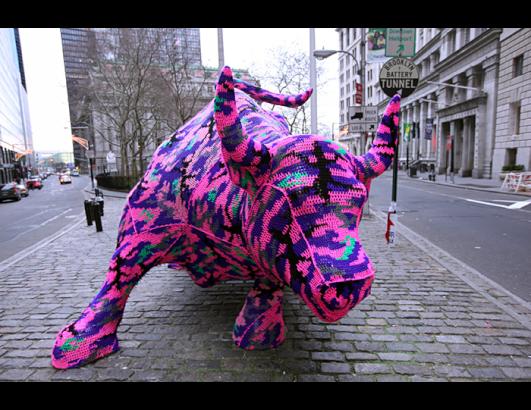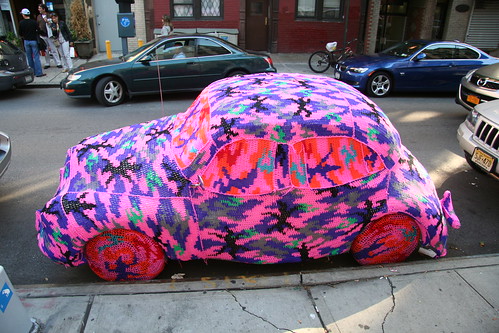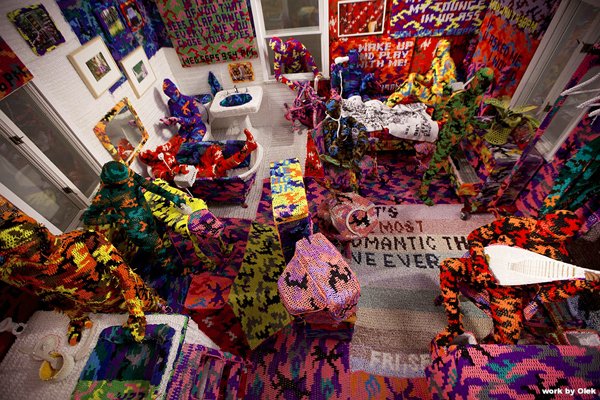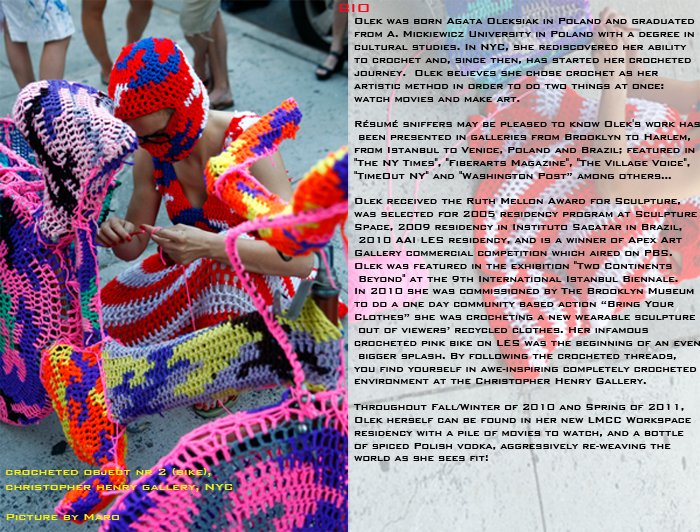David Wojnarowicz "A Fire in My Belly" Original from ppow_gallery on Vimeo.
December 16, 2010. The above is taken from the Vimeo page of PPOW Gallery and from the archives of NYU's Fales Library. It represents two segments, of approximately 13 and 7 minutes, that David Wojnarowicz shot and edited on Super 8 in 1986-87, which he entitled "A Fire In My Belly". It is NOT the four minute piece that was yanked from the National Portrait Gallery show on December 1. It is also NOT the video I posted earlier on this blog, with its Diamanda Galas banshee wail/dirge of "Unclean". Nor the segment I have seen with an overlaid soundtrack of a 1980s ACT UP demonstration. Wojnarowicz shot and presented his original footage without sound, a suggestion of the urgency and severity of the political climate that led to the mantra of "Silence = Death".
It is two weeks since the "silencing" of "A Fire In My Belly", and as we near Sunday's rally on the steps of the Metropolitan Museum, it's clear that the culture wars are by no means over. This is hardly news to anyone following the hurtful antics of the Tea Party. Ever more empowered by their victories in the midterm election, the same purveyors of fear and purposeful obfuscation who demonized Obama for the past two years are trying to legislate and coerce the cultural landscape, to make art conform to their hypocritical and faux Christian yardstick. The fact that their cynical misunderstanding and bad intentions AGAIN fall directly on Wojnarowicz's shoulders is testimony to the enduring raw, elemental, and confrontational power of his art. Although the forces of reaction and censorship will always find something to belittle and attempt to repress, we almost have to thank them for forcing the issue and focusing attention on work that especially needs to be discussed and re-evaluated right now, as an antidote to right wing resurgence.

First, a excerpt from the perceptive and empathetic analysis of Holland Cotter published in last Friday's New York Times:
Wojnarowicz made “A Fire in My Belly,” dated 1986-87, at a turning point. In 1987 his longtime mentor and lover, the photographer Peter Hujar, died of AIDS, and Wojnarowicz himself learned that he was H.I.V.-positive. Although his career was by then well established, he was backing off from involvement in the art world and on his way to becoming immersed in AIDS politics.
Both parts of “A Fire in My Belly” are made from video shot in Mexico, a country that Wojnarowicz found mesmerizing for its combination of vital popular culture and daily life lived shockingly close to the bone. The 13-minute video opens with a panning shot, taken from a moving car, of the streets of a Mexican town, interrupted by quick shots of newspaper headlines reporting violent crimes. These sequences are punctuated, very briefly, with a few other images: a suspended world globe; a cartoonish dancing puppet wearing a sombrero; a disembodied hand dropping coins.
Then three scenes of combat alternate repeatedly: a bullfight and a cockfight — each gruesome — and a masked and acrobatic wrestling match. Travelogue-ish sequences that follow — of a circus with performing animals and a visit to a Mesoamerican archaeological site with demonic-looking sculptures — go on too long (as does the wrestling), and the video ends abruptly when the dancing puppet is shot at with what looks like a pistol full of paint. If there is any overriding idea delivered in the video, it has to do with how violence-addicted people, and specifically men, are.
The seven-minute “excerpt” feels more packed and purposeful, and quite complete. The opening image, which will recur again and again, is of metal wheels turning, like some machine of fate. Then, interwoven and rapidly repeated, we see pairs, not necessarily juxtaposed, of related images: street beggars and armed police; Day of the Dead candy skulls and a painting of an Aztec human sacrifice; mummified bodies displaced from graves in a cemetery and an undisturbed tombstone being gently washed.
Certain images were evidently filmed in a studio: coins falling into a bandaged hand, and a hand held under splashing water; halves of a loaf of bread being sewn together, and a man’s lips being sewn shut. A short sequence of a man masturbating alternates with images of sides of beef in a slaughterhouse. The image of the crucifix with ants comes almost in the middle of all of this, between shots of bread being sewn and blood dripping into a bowl. At the end, images from the first video reappear — the puppet and the globe — both burning.
That “A Fire in My Belly” is about spirituality, and about AIDS, is beyond doubt. To those caught up in the crisis, the worst years of the epidemic were like an extended Day of the Dead, a time of skulls and candles, corruption with promise of resurrection. Wojnarowicz was profoundly angry at a government that barely acknowledged the epidemic and at political forces that he believed used AIDS, and the art created in response, to demonize homosexuals.
He felt, with reason, mortally embattled, and the video is filled with symbols of vulnerability under attack: beggars, slaughtered animals, displaced bodies and the crucified Jesus. In Wojnarowicz’s nature symbolism — and this is confirmed in other works — ants were symbols of a human life mechanically driven by its own needs, heedless of anything else. Here they blindly swarm over an emblem of suffering and self-sacrifice.
Cotter's listing of Wojnarowicz’s imagery is fairly complete, although I would add a recurring motif which functions in the 13 minute segment like a title card or periodic marker: face cards from the deck of a fortune teller (depicting characters like "The Siren", "The Drunk" or "The Scorpion") juxtaposed with the photo of an onrushing locomotive (a reference to heedless history?) carrying ever successive numbers. It seems to be an attempt at ordering the piece, the suggestion of a Stations of the Cross treatment that W. has augmented with representative elements of street culture.
Like Pasolini, Wojnarowicz was a gay activist, a revolutionary who rejected the restrictions, bigotry and repressive power of the Catholic Church YET whose cultural antecedents were fully rooted in his upbringing, in the rich symbolism of the Catholic soil. Both P. and W. undoubtedly saw the trap of using conventional Christian imagery to make art that would challenge the status quo, which is why both reinvigorated the original story of Jesus administering to the poor and downtrodden of his age by fully representing the contemporary lumpen milieu. Both were also prolific and unrepentant propagators of their own personal mythologies, conscious of their status as gay martyrs and avid to assume the mantle. (Although Jean Genet is often cited by W. and remains his most redolent antecedent in this regard.) These tendencies led P. and W. to imbue their art with the litany of a Christian experience, but willfully "tainted" with lay references to the street, to an earlier and enduring paganism onto which Christianity is but a graft. It is precisely this "taint" that angers the religious right and causes them to view the work as blasphemous. Their special anger seems reserved for the apostate, the lapsed Catholic who was offered the keys to salvation yet repudiated it, betrayed his birthright, willfully disobeyed the Church and rebelled against the full embrace of its "benevolent" conformity.
It is no accident that W. chose Mexico - not just as a travelogue of picturesque primitivisms, not just as a living demonstration of a "close to the bone" culture where the dialectics of suffering and cruelty are graphically obvious, but as the backdrop for his almost biblical meditation on the Age of AIDS. "A Fire In My Belly" is drenched in the symbolism of the body and the blood, lifted right from the Gospels: the loaf of bread being sewn together with thick red string, the lips of the artist being similarly joined, the blood dripping and overflowing the bowl, the luckless and legless begging on the road under the gaze of the police, the animals being led to the abbatoir, the sides of beef on hooks in the slaughterhouse. There is a pervasive, barely submerged violence on the street, ritualized by the masked Luchadors, fully realized in the cockfight, conflagrated by the flame eaters, domesticated in the performing circus animals, mocked by the dancing marionette under its sombrero. The action is surveyed by the panopticon of a rotating, all seeing eye (an indifferent God?). Those who choose to ignore it betray the suffering of their fellow men, and are seemingly being bribed by the infamous 30 pieces of silver, dropped from/into a bandaged hand.
Considering the heavy overlay of Christian narrative, it's a bit ironic that the so-called Catholic League (a right wing lobbyist group that actually has no institutional connection to the Church) finds the film blasphemous. W. seems to embrace the traditional Biblical progression of redemption through suffering that he learned in Sunday school. And the ten to fifteen seconds of ants crawling over a crucifix that has particularly angered the right and been seized upon as transgressive, while a mere snippet of the total imagery, seems an extension of the accepted iconography of Jesus' mortification and transcendence. In fact, what seems most dangerous, threatening and anarchistic in the film was never mentioned by its critics: the retributive, apocalyptic imagery of a world globe on fire, a map of Mexico ablaze, a puppet consumed in flames.
W.'s method of associative montage, of cross cutting action to create meaning, provides a "city symphony" that is reminiscent of early silent film practitioners like Walter Ruttmann and Dziga Vertov. Crashing images against each other to create a thesis is a brutal but efficient method of film making. By refusing any ameliorative or distracting soundtrack that might diffuse the power of the imagery, W. is forcing us to confront things directly, a strategy that is well suited to the urgency of the moment.
"A Fire In My Belly" is not a subtle work. By no means. It is a brazen cry, a strident bit of agitprop, the only honest reaction that W. could bring to a moment when multitudes (himself included) were HIV positive, when thousands were dying, and when the reaction of the state was to look the other way - when they were not using the very existence of the epidemic to demonize gay culture. As a new generation of the rabid right comes into its own, with its dumb-like-a-fox cunning and hypocrisy, it is hardly surprising that the work of Wojnarowicz is again at the fulcrum of the culture wars, a cause célèbre and a rallying point for the art world.
Some background on the Wojnarowicz censorship

Penny Starr's November 29 review of Hide/Seek on the Catholic News Service that precipitated the removal of "A Fire In My Belly":
Link
A perceptive piece by Patricia Silva on Open Salon, excerpted below:
Link
A significant act of censorship has snowballed because of one video on YouTube: a user-generated, super low-quality illegitimate copy of Fire In My Belly edited not by Wojnarowicz nor his estate; an illegal copy including an unauthorized soundtrack by Diamanda Galas. The origin of the video is unknown or unclear. At the time of Penny Starr's review, there wasn't an official video of Fire In My Belly on YouTube.
The user-generated video collage featured Diamanda Galas' This is the Law of the Plague, from Galas' controversial Plague Mass, a requiem for those dead and dying of AIDS, performed live at Saint John the Divine cathedral in New York City in 1991. Plague Mass was also attacked by the Catholic Church in the 1990s, because Galas used biblical texts to criticize and condemn the Roman Catholic Church's indifference to AIDS. So, what Donohue termed "hate speech" is actually Galas' text on Catholic indifference paired with Biblical passages showing the hypocritical context of such indifference. Galas had her own battle with censorship over this work, and won. Despite what some articles are reporting, Galas and Wojnarowicz never met, never collaborated. A friend of Wojnarowicz, Amy Scholder, confirms the two artists spoke a few times by telephone and admired each other's work, but that's it. Galas' music was never a part of any edit of Fire In My Belly by Wojnarowicz, a fact easily proved by Wojnarowicz's extensive notes and sketches for the work. Fire In My Belly is an unfinished work. A work in progress, edited for display...
By including this piece in Hide/Seek, the co-curators presented the complexities of living and dying during a time in art history when conservatism and censorship threatened creative expression; a time in history when homophobia and disregard for AIDS patients was a rampant display of political power. Removing this work from the show presents layers of irony, but real disappointment begins with the history-altering implications of censuring this piece. Not only does the removal of Fire In My Belly from Hide/Seek disrupt a proper narrative of the personal and social work and experience of LGBTQ artists in America, it is a censorship of American Art history in general, and an alarming step back for the progress of civil rights.
Ironically enough, for a show about visibility of queerness in American Art, Penny Starr's review has guaranteed that this piece be viewed and discussed far more than if it had remained in the show, waiting for someone to press play on a kiosk. To denounce an unfinished work as "Hate Speech" (an assumption based on a user-generated, unauthorized collage on YouTube) raises questions about posthumous showings of works of art in progress.








 You Killed Me First, installation view, 1985.
You Killed Me First, installation view, 1985. Street Kid, acrylic and collage, 1986.
Street Kid, acrylic and collage, 1986. Portrait of Bishop Landa. Mixed media, 1986.
Portrait of Bishop Landa. Mixed media, 1986. Mexican Crucifix, acrylic and collage on panel, 1986.
Mexican Crucifix, acrylic and collage on panel, 1986.

